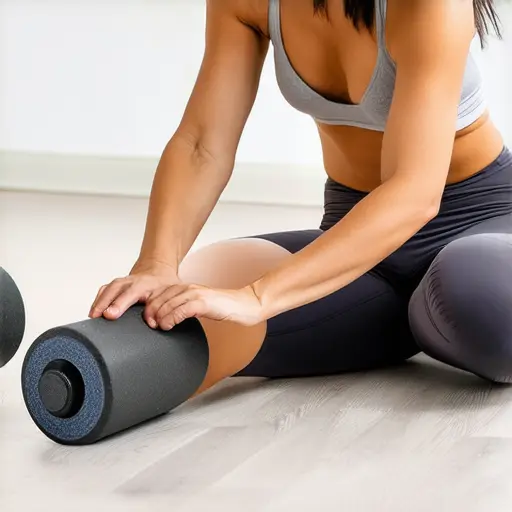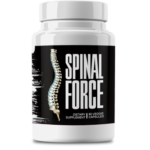This Village-Made Chinese Pain Reliever Eliminates Back And Joint Pain!
Best Exercises for Torn Meniscus Pain Relief

Best Exercises to Ease Torn Meniscus Pain (And Get You Moving Again)
If you're dealing with a torn meniscus, you know how frustrating it can be - that nagging knee pain that makes even simple activities feel like a challenge. But here's some good news: the right exercises can actually help you feel better. Not only can they reduce discomfort, but they'll also improve your knee stability and help you heal faster. In this guide, we'll walk through the most effective stretches, strengthening moves, and joint-friendly cardio options to relieve your torn meniscus pain. Plus, we'll cover what activities to steer clear of so you don't aggravate your injury. Ready to take the first step toward recovery?
Why Your Knee Hurts (And How Exercise Can Help)
Meniscus 101: Your Knee's Shock Absorber
That C-shaped cartilage in your knee? That's your meniscus - nature's perfect shock absorber between your thigh and shin bones. Whether you injured it during a soccer game or through years of wear and tear, a torn meniscus can cause:
- Sharp stabs of pain when you twist or squat
- Swelling that makes your knee feel stiff like it's wrapped in duct tape
- A weird "locked" feeling like your knee won't straighten all the way
Is It Really a Meniscus Tear? Look for These Signs
Wondering if your knee pain needs attention? Watch for these red flags:
- A dull ache that lingers after activity
- Trouble fully bending or straightening your knee
- Clicking or popping sounds when you move (like your knee needs WD-40)
Why Moving Helps When You Want to Stay Still
While resting your knee is important at first, the right exercises actually speed up healing by:
- Building up the muscles around your knee (think quads and hamstrings) to take pressure off the injured area
- Keeping your joint flexible so it doesn't stiffen up
- Preventing muscle loss while you recover
Stretches That Actually Help (No Yoga Mastery Required)
Hamstring Stretch: Your New Best Friend
Try this: Sit on the floor with one leg straight and the other bent. Reach for your toes (no need to touch them!) while keeping your back straight. Hold for 20-30 seconds. Why it works: Tight hamstrings pull on your knee like an overzealous puppeteer - this stretch gives them some slack.
Calf Stretch: Simple but Effective
Try this: Face a wall, step one foot back, and press that heel down while bending your front knee. Hold for 20 seconds. Why it works: Tight calves can throw off your whole knee mechanics - like driving with the parking brake on.
Quad Stretch: Because Knee Stability Matters
Try this: Stand on one leg (hold onto something if needed), pull your other foot toward your backside, and keep your knees close together. Hold for 30 seconds. Why it works: Flexible quads mean less tugging on your already unhappy meniscus.
Strength Moves That Won't Wreck Your Knee
Straight Leg Raises: Boring but Brilliant
Try this: Lie on your back with one knee bent. Lift the straight leg (toes pointing up) about 12 inches, then lower slowly. Aim for 10 reps. Pro tip: If your back arches, you're lifting too high.
Mini Squats: All the Gain Without the Pain
Try this: Stand with feet shoulder-width apart and lower just a few inches (like you're about to sit in a chair). Keep knees behind toes. Use a chair for balance if needed. Warning sign: If this hurts, stop immediately.
Clamshells: For Hips That Help Your Knee
Try this: Lie on your side with knees bent. Lift your top knee while keeping feet together (like a clamshell opening). Do 12 reps per side. Why it works: Strong glutes prevent your knee from collapsing inward - a common pain trigger.
Cardio That Won't Make Your Knee Scream
Swimming: Like a Vacation for Your Joints
The water's buoyancy means you can move without pounding your knee. Stick to freestyle or backstroke - breaststroke's frog kicks might be too much right now.
Cycling: Smooth Moves for Stiff Joints
Use a stationary bike with low resistance. Key adjustment: Set the seat height so your knee has a slight bend at the bottom of each pedal stroke.
Elliptical: Running Without the Ouch
This machine gives you a running-like motion without the impact. Stand tall and resist the urge to death-grip the handles.
Balance Exercises: Because Wobbly Knees Need Love Too
Single-Leg Stands: Start Simple
Hold onto a chair and lift one foot slightly off the ground. Work up to 30 seconds per leg - no shame in starting with just 5 seconds!
Heel-to-Toe Walk: Like a Sober Field Test
Walk in a straight line, placing each heel directly in front of the other foot's toes. Great for improving coordination.
Yoga Poses: Modified for Real People
Try tree pose (with toes on the ground if needed) or a shallow warrior II stance. No need to look Instagram-perfect.
What NOT to Do (Save These for Later)
High-Impact Activities: Just Don't
Running, jumping, basketball? Not until your doctor gives the green light.
Deep Squats and Lunges: Too Much Too Soon
Save the 90-degree bends for later - right now, shallow movements are your friend.
Quick Direction Changes: Knee Kryptonite
Sports that involve sudden pivoting (we're looking at you, tennis and soccer) can retwist your healing meniscus.
Extra Tips for Faster Recovery
Ice vs. Heat: When to Use Each
Ice (15-20 minutes) after exercise reduces swelling. Heat before stretching loosens things up - like warming up a stiff rubber band.
Shoes Matter More Than You Think
Good cushioning and arch support can take pressure off your knee. It's worth investing in proper footwear.
When to Call in the Pros
Time to see a doctor or physical therapist if:
- Pain sticks around despite your exercises
- Your knee keeps giving out or locking up
- Swelling doesn't improve with rest
Wrapping It Up
The Golden Rules of Meniscus Recovery
- Mix gentle stretching, targeted strengthening, and low-impact cardio
- Skip anything that makes your knee protest loudly
- Your knee's the boss - if an exercise hurts, dial it back
Final Thought: You've Got This
A torn meniscus might slow you down, but it doesn't have to stop you. With these smart exercises, you can manage your pain, rebuild strength, and get back to doing what you love. Just remember - check with your healthcare provider to tailor a plan for your specific injury. Here's to taking it one step at a time toward pain-free movement!
Have your own meniscus recovery tips or questions? Drop them in the comments - let's help each other out!








